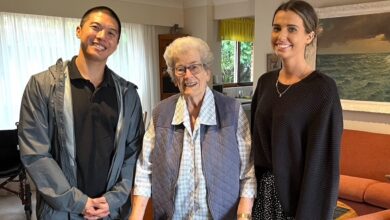The rigour of informed consent

It’s absolutely essential to make sure patients know what they’re getting into – and language barriers can make that a chore.
Patients must be fully informed before they can give proper legal consent for a procedure. They must have a full understanding of the proposed treatment, associated risks, any alternatives, side effects and the length of time involved. This can be difficult to achieve when language barriers exist.
A recent court decision held that a surgeon and hospital staff were negligent in failing to properly inform a non-English speaking patient of the risks of surgery and check whether she understood them.
In George v Biggs [2015] NSWDC 11, Patient G underwent surgery for the removal of a benign tumour (benign acoustic neuroma) at the base of her skull. During the operation, patient G’s facial nerve was inadvertently severed, causing paralysis of the right side of her face. Patient G sued, alleging that the surgeon and hospital were negligent in failing to warn her of a risk of injury to her facial nerve.
The court found that patient G had consented to the surgery on the mistaken belief that she had a cancerous (as opposed to benign) tumour in her brain that required surgical removal. The court accepted that patient G would not have consented to the procedure had she known the tumour was benign and understood the associated risks of surgery. If fully informed, she would have elected for non-operative conservative management (a wait-and-watch approach).
The court extensively outlined the steps required to ensure a patient is properly informed:
- Achieving a background understanding
- Taking some time to establish rapport with the patient
- Assessing capacity for comprehending verbal communications
- Assessing how to achieve effective communication feedback
- Pursuing the process of obtaining information from the patient
- Providing the patient with opportunities to clarify/ask questions
- Conveying/condensing important information to the patient
- Ascertaining patient understanding of information conveyed
- Revising the two previous steps to ensure patient understanding
- Summarising the information and patient understanding
- Ascertaining patient wishes, expectations and concerns
- Relating patient wishes and expectations to clinical possibilities
- Providing opportunities for patient questions and clarifications
- Reaching a common understanding between doctor and patient
- Recording the facts and details of common understandings
- Setting arrangements in train for the agreed treatment course.
Patient G was of Macedonian descent and spoke limited English. Prior to the operation, she attended various consultations.
- Medical consultation, March 6, 2009, with Professor F. The court found this was a preliminary consultation and was too far out from the operation for a valid and informed consent to be obtained. In any event, the patient attended with a friend (Mr. M) who assisted her in interpreting the discussions with the doctor. The friend could speak English only a little bit better than the patient.
- Medical consultation, April 3, 2009, with Dr. B. This was the first opportunity to provide adequate information and advice from the operating surgeon to comprise the elements of valid consent. However, the patient attended with the same friend (Mr. M), who mistranslated critical information about the operation, which led the patient to be misinformed and confused. Dr. B failed to explore the patient’s degree of understanding despite knowing that there were language barrier issues.
- Pre-admission clinics, October 14, 2009. On this attendance, the patient signed a pre-completed consent form. There is confusion about the evidence regarding the manner, timing and attendees at the time of signing; the court accepted the patient’s evidence that there was little or no clarification of the surgery even though an interpreter had been booked to attend (for some unexplained reason, he was never called to give evidence).
- Pre-operative admission, October 30, 2009, with Dr. M. The primary purpose of this attendance was to hold a proper and adequate discussion with the patient about the operation, including the provision of information as to risks. On this occasion, the patient attended by herself but a Serbian interpreter was provided over the phone. It is clear from the evidence that further misunderstandings and mistranslations were made by both the interpreter and the patient, which Dr. M should have clarified at the time.
- Postponed operation, November 2, 2009. Surgery was cancelled and there was no evidence at trial of any discussions concerning the patient’s understanding of the procedure.
- Operation, November 30, 2009. Apart from the pre-operative checking, there was no evidence that anyone on behalf of the defendants undertook any discussions with the patient to confirm her understanding of her need for surgery, or relating to her consent to the surgery. This was a topic one of the expert medical witnesses said reinforced “… the need for a surgeon to confirm, even at a late stage, that an operation was still required”.
The court found the patient had not been provided information to the required standard in language and terms she understood. The absence of such information, advice and warnings amounted to a failure on the part of the defendants to exercise skill and care. The plaintiff was awarded damages of $330,999.85.
This decision should be a salutary and instructive lesson for nurses and midwives. Take additional care when obtaining informed consent in circumstances where there are linguistic barriers. Some might believe the 16 steps the court outlined are too onerous in light of clinical time restraints and practice demands. Maybe. But to ignore any of them, particularly not arranging an interpreter, is fraught with danger.
Scott Trueman is a lecturer in the School of Nursing, Midwifery and Nutrition at James Cook University.
Email: [email protected]




